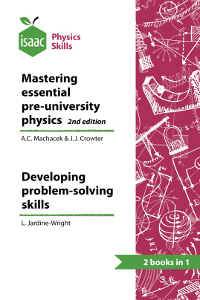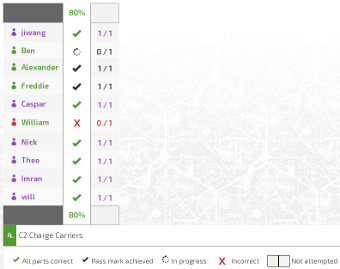Using Isaac Physics
Throughout your physics course in sixth form, you will be using the Isaac Physics resources to enhance your learning experience, help you to master physics concepts, and to develop your problem solving skills.
Isaac Physics is a fairly new project run by the University of Cambridge, supported by the Department for Education. It offers activities to develop physics problem solving for students transitioning from GCSE, through sixth form, to university. There are three main aspects of the support that is offered:
- an online study tool,
- a book of physics problems, available at a cost price of £1,
- face-to-face problem solving events at partner schools and institutions across the UK.
Registering with Isaac Physics
Whilst you can access all of the material on the Isaac Physics website without registering, registration is free and gives personalized support, allowing you to save and review your progress. Just click here to register.
How to use the book
We are going to give each sixth form physicist a copy of the Isaac Physics book Mastering essential pre-university physics & Developing problem-solving skills (2nd edition), by A.C. Machacek, J.J. Crowther and L. Jardine-Wright. This is yours to keep.

There are two kinds of exercises in the book:
- skill sheets - use these to practise applying a single principle of physics to a range of situations, beginning with manipulating the essential equations
- fact sheets - use these to test physics knowledge
Each sheet from the book has an online version at isaacphysics.org. Here you can enter your answers to problems for Isaac Physics to mark, and I can set you sheets to do for prep and then get information on how you have done.

We want to encourage you to invest your energy and intellect in solving physics problems and building a good working relationship with your physics dons. To this end, we are going to adopt the following procedure when answering exercises from the book:
- Start writing your working and the answers to the problems on paper (to hand in, in class).
- Check the first couple of problems by submitting the answer online, before attempting the whole page (this avoids the nightmare situation of doing a simple thing wrong on all problems and having to redo it all).
- Carry on with your work and finish the sheet. If you cannot solve a problem in a reasonable time (I don't want you to lose sleep!), don't worry: Make a guess and write a comment to explain the basis of your guess.
- Submit the answers online and at this point highlight and annotate your written work, preferably in a different colour:
- For any problems you find you got wrong, write down your reasoning (e.g.
It says it wants 3SF. Why do they want 3SF?
,I can't see why my answer is wrong?
,Don't you just use V=IR?
). - For problems you solved correctly, use your annotation for what John Wheeler recommended: Write down what you could tell your earlier self in order to make finding the solution smooth sailing. By the exam you will have built a library of useful problem-solving ideas.
- For any problems you find you got wrong, write down your reasoning (e.g.
- I will look at these comments / or you can use them as reminders to ask questions in class. This encourages you to reflect on what you've done wrong, misunderstood etc, and it helps me to help you.